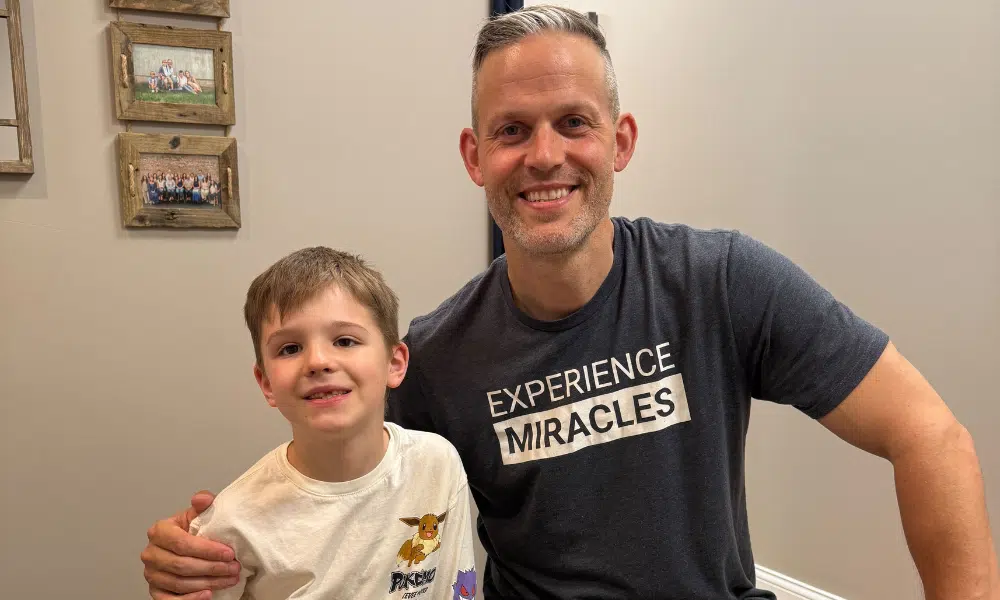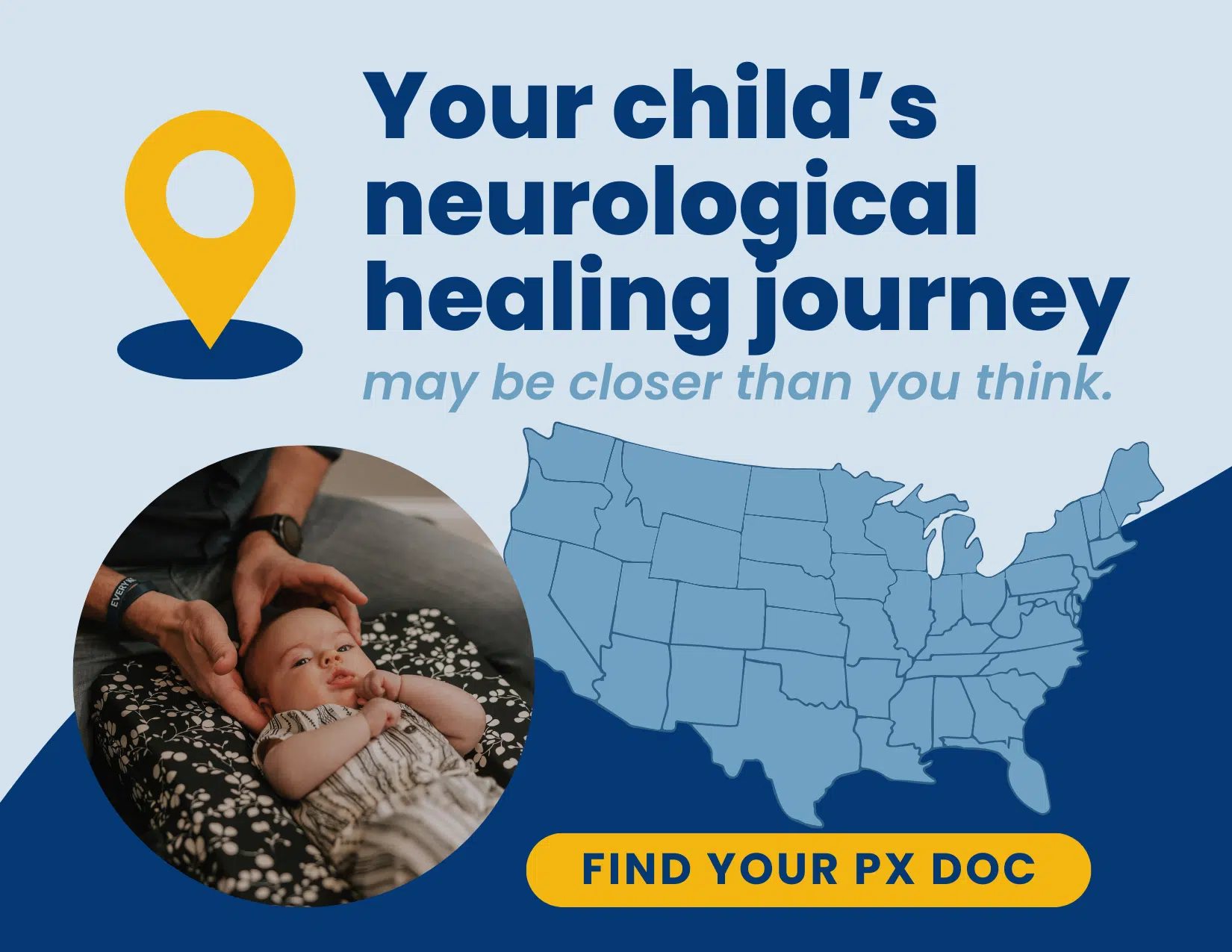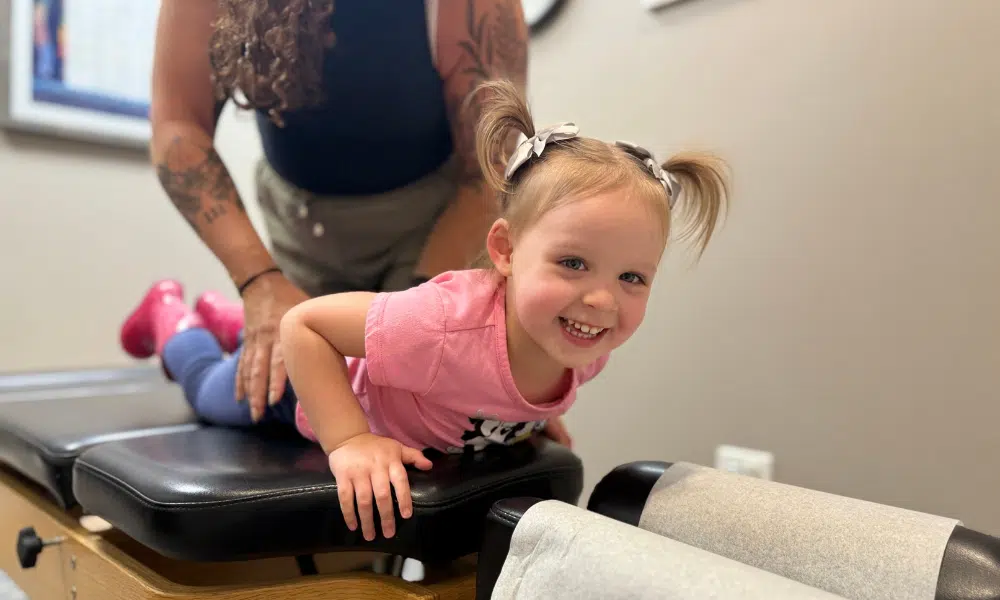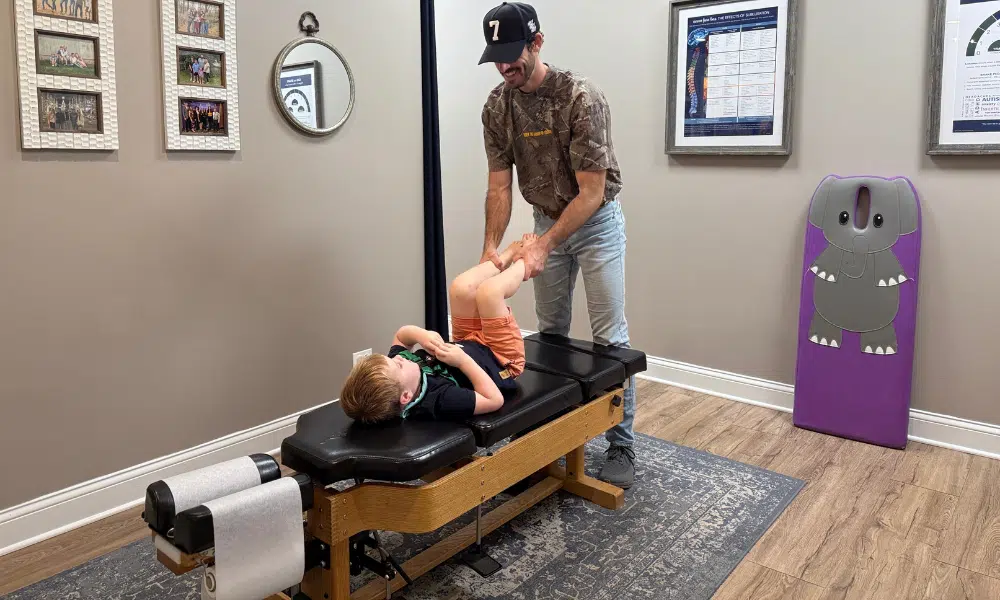As a parent, you know the drill all too well. Your little one is up all night, tugging at their ear and crying inconsolably. The pediatrician confirms your suspicions: yet another ear infection. Another round of antibiotics is prescribed… but deep down, you can’t help but wonder if there’s more to the story.
If this sounds familiar, you’re not alone. Ear infections are incredibly common in kids — in fact, five out of six children will have at least one before their third birthday. They’re also the most common reason parents bring their child to the doctor.
But while often brushed off as a normal part of childhood, recurrent ear infections can quietly disrupt more than just your child’s comfort. Ongoing fluid buildup and inflammation can lead to temporary hearing loss, which may impact speech, behavior, and developmental milestones — especially during those critical early years.
And in some more rare cases, if infections are frequent or left untreated, they can even begin to affect long-term hearing.
As concerning as that may sound, there’s hope, answers, and help to break the cycle! By understanding the real root causes of chronic ear infections and exploring drug-free, neurologically-focused solutions, you can not only help protect your child’s hearing — but set them up for a stronger, healthier future.
Can You Go Deaf From an Ear Infection?
Ear infections, medically known as otitis media, occur when the middle ear becomes inflamed and fills with fluid. This can happen due to a variety of factors, including bacterial or viral infections, allergies, or secondhand smoke exposure.
When left unaddressed, this fluid can put pressure on the eardrum, causing it to rupture. Repeated ruptures can lead to scarring and permanent damage to the delicate bones of the middle ear, impairing sound transmission.
There are two main types of hearing loss after ear infections:
- Conductive hearing loss: This occurs when sound is not effectively conducted through the outer or middle ear, often due to fluid buildup or damage to the eardrum or ossicles (tiny bones in the middle ear). Conductive hearing loss is usually temporary, but it can become permanent if infections are chronic or severe.
- Sensorineural hearing loss: This type of hearing loss is less common but more serious. It happens when the inner ear (cochlea) or nerve pathways to the brain are damaged. Sensorineural hearing loss is usually permanent and can occur if infections spread beyond the middle ear.
Even mild hearing loss can have a significant impact on a child’s development. Children with hearing impairments often struggle with speaking, reading, and school success, as well as developing social skills, which can lead to delays in vocabulary, grammar, and comprehension. They may also struggle academically, as they miss out on important auditory information in the classroom. Socially, children with hearing loss may feel isolated or have trouble forming friendships due to communication barriers.
The good news is that early detection and appropriate care can help mitigate the impact of ear infections on hearing and development. However, as we’ll explore in the next section, conventional care plans like antibiotics and surgical interventions come with their own set of risks and limitations.
Limitations of Conventional Care Plans
When a child is diagnosed with an ear infection, antibiotics are often the first line of care. However, this approach has some significant drawbacks, and the overuse of antibiotics is a major concern.
Firstly, the majority of ear infections are caused by viruses, not bacteria, which means antibiotics will be completely ineffective. Secondly, the overuse of antibiotics can lead to the development of antibiotic-resistant strains of bacteria, making future infections more difficult to treat.
Perhaps most concerning, however, is the impact of antibiotics on gut health. The human gut is home to trillions of beneficial bacteria that play a crucial role in immune function, nutrient absorption, and even mental health. Antibiotics indiscriminately kill both harmful and beneficial bacteria, disrupting this delicate balance. This can lead to a weakened immune system, making children more susceptible to future infections.
In cases of recurrent or severe ear infections, doctors may recommend surgical interventions such as tympanostomy tubes (also known as ear tubes or grommets). These small tubes are inserted through the eardrum to allow air into the middle ear canal and prevent fluid buildup. While ear tubes can provide relief in some cases, they also carry risks such as:
- Eardrum scarring or perforation
- Infection or drainage from the tube site
- The need for repeat surgeries if infections persist
- Potential for permanent hearing loss in rare cases
Moreover, ear tubes do not address the underlying factors that contribute to chronic ear infections, such as nervous system dysregulation or environmental irritants. As a result, many children continue to experience recurrent infections even after tube placement.
As parents, it’s natural to want a quick fix for our children’s ear pain and discomfort. However, relying solely on antibiotics and surgical interventions may not be the best approach for long-term ear and hearing health.
The “Perfect Storm” Behind Chronic Ear Infections
At PX Docs, we understand that recurrent ear infections are not just a result of bad luck or poor hygiene. Instead, we recognize that there is often a “Perfect Storm” of factors that contribute to this painful and frustrating cycle. One of the most significant yet often overlooked factors is nervous system dysfunction.
Birth is an incredibly complex process that can put a great deal of stress on a baby’s delicate spine and nervous system. Interventions or trauma, like forceps, vacuum extraction, or even just the twisting and turning of the head during delivery, can lead to misalignment and stuck tension in the upper cervical region, an area that is closely connected to the function of the eustachian tubes.
This stuck tension and stress, known as subluxations, can disrupt the proper drainage of fluid from the ear, creating a breeding ground for bacteria and viruses.
In addition to physical trauma, the developing nervous system can also be impacted by chemical stressors like maternal antibiotics or environmental toxins, as well as emotional stress experienced by the mother during pregnancy.
This “Perfect Storm” of factors can lead to a state of dysautonomia, or imbalance in the Autonomic Nervous System, which controls many of the body’s automatic functions, including the immune response.
Other contributing factors to ear infection hearing loss can include:
- Allergies and environmental irritants that cause inflammation and congestion in the ears and sinuses
- Bottle-feeding, especially while lying down, which can allow milk to pool in the eustachian tubes
- Secondhand smoke exposure, which can irritate the delicate tissues of the ear and weaken the immune system
Because traditional pediatricians aren’t trained to identify or address subluxation and dysautonomia, their default approach is often to rely on repeated courses of antibiotics.
While these may provide temporary relief, they do not address the underlying nervous system dysfunction. As a result, the child often experiences recurrent infections, leading to more rounds of antibiotics and a vicious cycle of ear fluid, inflammation, and immune suppression.
Breaking this cycle requires a different approach, one that focuses on supporting the body’s natural healing capacity by restoring balance to the nervous system.
Kyle, for example, went through 10 rounds of antibiotics and three unsuccessful ear tube surgeries. His mom felt stuck and hopeless—until they discovered Neurologically-Focused Chiropractic care, which addressed the underlying nervous system stress. Today, he’s active, healthy, and ear infection free, and his mom says she no longer has to even worry about ENT visits!
Empowering Parents with Neurologically-Focused Chiropractic Care
As parents become more aware of the limitations and potential risks of conventional care plans for ear infections, many are seeking out natural, drug-free alternatives. Neurologically-Focused Chiropractic Care offers a promising solution by addressing the underlying nervous system dysfunction that contributes to recurrent ear infections.
It’s important to emphasize that we don’t treat or “cure” the ear infection itself. Instead, we focus on addressing the underlying nervous system stress that is often at the root cause of them. By supporting proper nervous system function, drainage, and immune response, we give the body the tools it needs to heal naturally and ideally without relying on medications. This approach helps reduce recurrence and promotes long-term health rather than just temporarily masking the symptoms.
By clearing out subluxation in the upper cervical region, especially, Neurologically-Focused Chiropractic adjustments can help improve eustachian tube function, allowing for better drainage of fluid from the middle ear. This, in turn, can reduce the frequency and severity of ear infections.
At PX Docs, we use a technology called INSiGHT scans to pinpoint areas of nervous system stress and subluxation. These scans measure heat and muscle tension along the spine, providing a detailed picture of where adjustments are needed. This targeted approach allows for highly personalized care that addresses each child’s unique needs.
When you visit a PX Docs office, you can expect a thorough evaluation of your child’s nervous system health. This may include INSiGHT scans as well as physical exams and health history reviews.
Supporting Healthy Hearing at Home
While Neurologically-Focused Chiropractic Care can be a powerful tool in addressing the root causes of ear infections and clearing subluxation, there are also things parents can do at home to support their child’s ear and hearing health.
Dietary adjustments can make a noticeable difference. Reducing or eliminating sugar and dairy, especially during an active ear infection, can help lower inflammation and support the immune system. Some parents also find natural remedies like garlic oil drops inside the ear to be helpful for clearing out an active infection.
Garlic has antimicrobial properties and may help soothe mild discomfort, but these drops should only be used in intact eardrums and under guidance from a healthcare professional.
Environmental factors play a role in ear health as well. Exposure to secondhand smoke, air pollution, and allergens like dust and pet dander can all contribute to inflammation and congestion in the ears and sinuses. By creating a clean, low-irritant home environment, parents can reduce their child’s risk of developing infections.
Monitoring your child’s hearing and development is also crucial. Some signs of ear infection hearing loss to watch for include:
- Not responding to sounds or their name by 6 months of age
- Not turning their head toward a sound by 9-12 months
- Limited or no speech by 18 months
- Difficulty understanding or following directions
- Frequently asking “what?” or “huh?”
- Turning up the volume on electronic devices very high
If you notice any of these signs or if your child experiences recurrent ear infections, it’s essential to seek professional care from an Ear, Nose, and Throat Specialist (ENT). Early intervention has been found to make a significant difference in long-term outcomes for speech, language, and communication.
A Brighter Future for Little Ears
Ear infections may be common, but they should never be dismissed as a minor inconvenience. Unaddressed or recurrent infections can lead to hearing loss, speech delays, and academic challenges that impact a child’s overall quality of life. By understanding the true root causes of this painful and frustrating condition, parents can take proactive steps to protect their little ones’ ears and hearing.
While conventional care plans like antibiotics and ear tubes may provide temporary relief, they often fail to address the underlying nervous system dysfunction that sets the stage for recurrent infections. Neurologically-Focused Chiropractic Care offers a safe and effective alternative by restoring balance to the nervous system and supporting the body’s natural healing capacity.
We are committed to empowering parents with the knowledge and resources they need to make informed decisions about their child’s health. If your child is struggling with chronic ear infections or you suspect they may be experiencing hearing loss, we encourage you to explore the drug-free solutions offered by our network of skilled pediatric chiropractors.
Don’t wait until your child is missing out on critical learning and development opportunities. Visit the PX Docs directory today to find a provider near you and schedule a consultation. With the right support and care, your child can break free from the cycle of ear infections and enjoy a brighter, healthier future.





